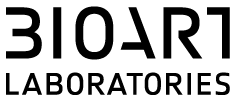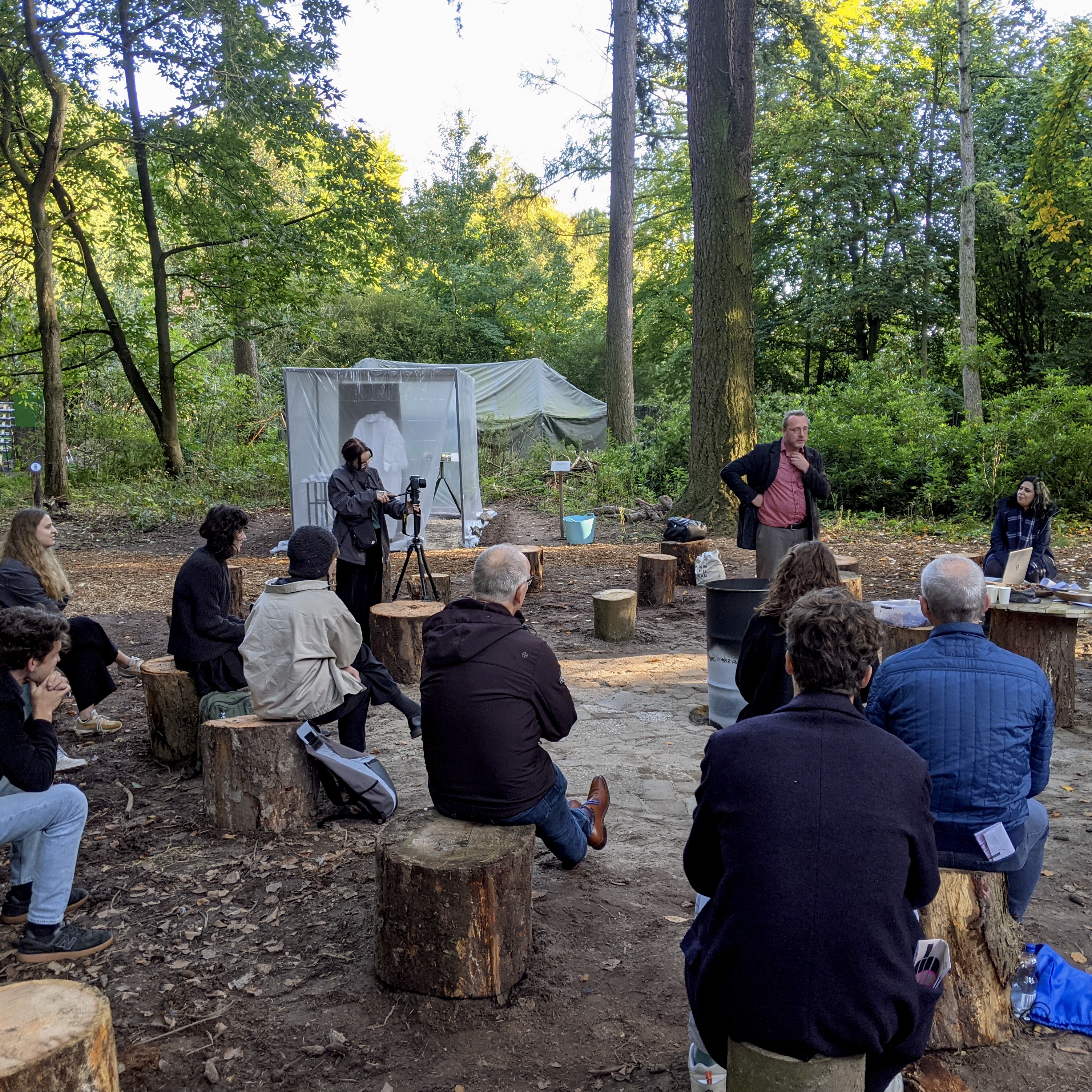On Saturday 16 October we hosted a debate around our new fire pit. Dr. Laurens Landeweerd introduced the framework and statements regarding Bioart and design, time, the living and the matter of all of them. Introducing a way to discuss interconnectedness. Artists, employees and visitors participated in the interactive debate by physically taking as a response to the statements proposed by Dr. Landeweerd.
On Sunday October 24th at 16.00 BioArt Laboratories will host another fire pit debate to conclude a fruitful Dutch Design Week with. You are invited to join.
Gijs Visser, MA Philosophy student at Erasmus University Rotterdam captured the essence of this debate in a column.
The Matter of Life is Time, fire pit debate
Last Saturday dr. Laurens Landeweerd introduced the framework for a interactieve debate around the fire pit in which we explored the conceptions and boundaries of design, fine art, authorship and (biological) life and their interrelation.
Landeweerd started his introduction by elaborating on his work on French philosopher Henri Bergson. In doing so he employed Bergson’s thought to argue that time is not (just) a measurement between two points in time, always requiring said two points. Instead he argues for a conception of time that views it as the matter of life itself. Time becomes then a process of living, the way in which something lives. Thereafter Landeweerd connected the notion of time as the structure of life to thermodynamic law, by stating that life could be defined as the ever spreading and expansion of matter, a property of life taken from thermodynamics. However, this movement of life is not always one of conservation, contrary to what the law of preservation of heat energy in thermodynamics may indulge us to think. Life is thus not a preservation of energy. Instead, Landeweerd argued, life can be seen as the outward movement of matter, an ever expanding movement that will eventually turn all life into a homogenous, grayish outwash of matter. To illustrate this, Landeweerd turned to the simple example of a living fish. It is possible to make the fish into a cooked dinner, whereas the other way around is impossible.
Departing from this new conception of life followed a discussion in which the boundaries of the fields in which bio-art operates were explored and debated. The newly built fire pit around which we gathered for the talk seamlessly transformed into the perfect surrounding for a debate in seminar style. The people who joined came from different disciplines but were asked to actively contribute and explore their own ideas about art, design and biological life while enjoying the heat of the campfire, roasted chestnuts and good wine. Landeweerd introduced two statements after which everyone was forced to choose a statement to side with. He then would curate the debate, not by explicitly expressing his own ideas, but by summarizing the points made by the audience and asking critical questions. This led lively discussions, which were high paced and interesting to all.
An especially interesting point of debate was whether, when working with “life” in art and design, the creator should be seen as the single author or whether “life” itself as co-author would be a favorable understanding of the expressive force in bio-art. These statements brought the debate to a discussion about the boundaries of bio-art. The idea of authorship poses an especially interesting “problem” to bio-art as it has wide ranging consequences for the way in which the world, life, culture, biology are understood. When one views life itself as a composition, a constellation of affects grouped together, it becomes increasingly difficult to not view bio-art as a co-authorship of life and “creator”. At the same time, it is worth asking if the powerful act of determining the constellation of affects can not be seen as authorship.
Even the question of what bio-art is sparks an extensive debate. On the one hand bio-art is able to include in its practice almost anything. Ranging from computer viruses, artificially grown skin to death, bio-art is perfectly able to include almost anything into its field of work. At the same time, these practices still share an orientation on life, even when they have as their content supposed opposites of organic life (computer viruses, death etc.). What they do share however is a relation to life. What can a computer virus tell us about life? In what way does a computer virus “act”, possess intentionality?”.
In a way, these questions are still about life, not because they have life as their content, but precisely because they negate life. By talking about what is conceived to not be life, we sharpen our understanding of what life is. These discussions are then not about reaching consensus, but about the broadening of understanding, about the creation of concepts and new ways to understand bio-art and life.
This debate itself did not only question authorship and life. It questioned the way we are living in the anthropocene. They way in which we understand life and treat the other living things around us. While in the anthropocene, we put ourselves, human beings, above the other living creatures. The symbiocene should shift this equilibrium.
BioArt Laboratories ‘the Symbiocene forest’ exhibition offers a sneak peek into other ways of acting and relating to the world around us.
It is time for a change! Visit our exhibition during the Dutch DesignWeek 16-24 Oct, and join our next fire pit debate on Sunday Oct. 24th at 16.00 Location: BioArt Laboratories Oirschotsedijk 14-10, Eindhoven



